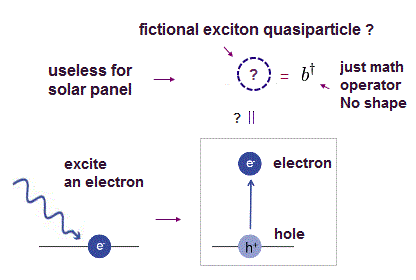
Home page
Polariton, Skyrmion, exciton-switch,
Magnon, heavy quasiparticles are useless
(Fig.1) The very old fictional exciton quasiparticle model represents an electron and a hole transiently excited by laser or solar light.

Quantum mechanics unable to deal with multi-electron atoms has to describe any physical phenomena of materials or molecules by using fictional quasiparticle models created in old 1930s that can Not clarify true physical mechanism.
For example, when laser or solar light transiently excites an electron (and a hole left ) of material and molecules in LED and solar panel, quantum mechanics tries to explain this transiently-excited electron (+ a hole ) as a fictional exciton quasiparticle ( this-3rd-paragraph ) which quantum mechanical pseudo-particle-model is very old, unchanged, impractical, since it was created in 1931 ( this-p.6 ).
This-6th-paragraph says -- Unreal exciton quasiparticle
"An exciton is Not a true particle, but a (fictional) quasiparticle"
Of course, these fictional quasiparticle models such as exciton with unreal effective masses expressed only as nonphysical math symbols (= a†, b†.. ) with No real particle shape nor mass ( this-p.3, this-p.5, this-p.3 ) are useless for any technologies such as LED and solar cells, which inconvenient fact is hidden by an incredible amount of overhyped fake news and misleadingly-colorful picture trying to make useless quasiparticle models appear to be useful, promising.
(Fig.D) Quantum mechanical unreal exciton quasiparticle model is useless, hampering solar cell, LED technology.
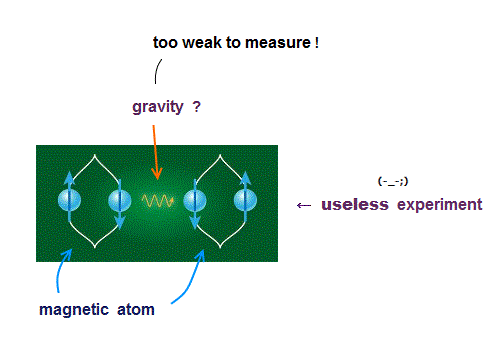
Technologies of the solar energy, cells, panels have been deadend with No more progress.
Energy efficiency of the commercially-endurable solar panels can Not exceed 20% despite 70 years of researches ( this-7~8th-paragraphs, almost No progress from 15% in 1957, this-p.3-lower ) due to the useless fictional quantum mechanical exciton quasiparticle model ( this-p.6-p.15 ).
Light-emitting diode (= LED ) and solar cells are very old technology discovered before the (useless) quantum mechanics was created (= so quantum mechanics was irrelevant to discovery of LED and solar cells ).
↑ LED and solar cells were discovered accidentally or invented by trial-and-error-approach irrelevant to prediction of the useless quantum mechanics which unphysical (exciton) model just hampers LED from advancing now, contrary to hypes.
This-who-invented-LED-lighting-5th-paragraph says
"Nick accidentally created a red LED"
This-3rd-paragraph says -- Trial-and-error invention
"To create different LED colors,... Trying out different compounds was a very slow trial-and-error process" ← Quantum mechanics was irrelevant.
This-2nd~4th-paragraphs say -- Accidental discovery
"In 1954, the Bell laboratory in the United States accidentally discovered that silicon semiconductors doped with certain impurities "
↑ Despite the fact that the useless quantum mechanics was irrelevant to solar cells, the 2nd-last paragraph of this overhyped news says
"(fictional quantum mechanical quasiparticle) Exciton diffusion and transport are important processes in solar-cell devices, so understanding what limits these may (= just speculation, still unrealized ) well help the design of better materials"
(Fig.F) Overhyped fake news is necessary to make the useless quantum mechanical quasiparticle model "promising".

The 2nd and last paragraphs of this overhyped news (1/29/2025) say
"Dark excitons are tiny pairs made up of one electron together with the hole it leaves behind when it is excited. They carry energy but cannot emit light"
"This means that this technique can be used in the future (= still unrealized now ) to specifically improve the quality and therefore also the efficiency of solar cells"
↑ This research paper's abstract says nothing about any practical use such as solar cells (= so exciton quasiparticle is useless for any technology ) contrary to the above overhyped fake news.
↑ In this way, there is always a wide discrepancy between the overhyped fake science news and the actual paper to hide the fact that today's research is deadend due to the unphysical quantum mechanical quasiparticle model.
(Fig.2) Fictional exciton quasiparticle is too short-lived to be practical.
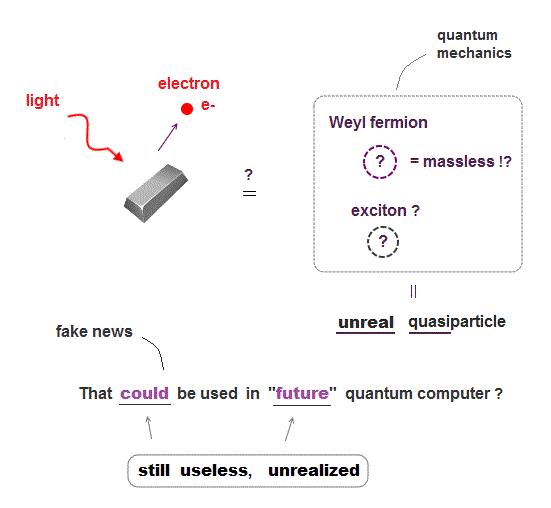
This fictional exciton quasiparticle representing an electron and a hole transiently excited by light has extremely-short lifetime of only 30 ns (= nanoseconds ).
↑ So this too-short-lived neutral fictional exciton quasiparticle is completely useless for any computers or storage memory devices (= which must store information for much longer time ), contrary to a lot of hypes.
The 1st paragraph of this overhyped news (2/10/2025) ( or this ) says
"A newly-discovered class of quasiparticles known as fractional excitons.... could have applications in quantum computing and sensing" ← untrue
↑ The abstract of this research paper (= this-2nd-paragraph ) says nothing about any practical application such as (fictional) quantum computing nor sensing (= so useless research ), contrary to the above hyped news.
↑ This research (= p.2-Fig.1 & p.6 ) tried to associate some measured electric conductance (= called Hall effect caused by classical Lorentz magnetic force ) with fictional exciton quasiparticles having unreal fractional charges.
The last paragraph of this other hyped news (2/10/2025) on fictional exciton quasiparticle also says
"This research might (= just speculation, still useless ) possibly aid semiconductor development or quantum information science. The long-term goal is to better understand fundamental exciton behaviors, which might eventually influence applications in solar energy harvesting, or possibly, quantum computing."
↑ This research paper's abstract says nothing about any practical use such as (fictional) quantum information nor computing (= so exciton is useless ), contrary to the above hyped fake news.
The 2nd-last and last paragraphs of this other fake news (3/19/2025) also say
"exciton particles (= fictional quasiparticle ) generated by illuminating the thin film with light"
"expected to contribute significantly to the development of quantum computing materials."
↑ This research paper's abstract says nothing about any practical use such as (fictional) quantum computing (= so useless exciton research ), contrary to the above hyped news.
↑ This research paper's p.8-methods shows this research just measured (macroscopic) magnetic susceptibility, optical properties, transmittance spectra by applying light or magnetic field to some material to imagine fictional exciton quasiparticles that have nothing to do with quantum computing.
The 7th and last paragraphs of this hyped news (6/12/2025) say
" This allows the excited state, which we call a triplet exciton (= fictional quasiparticle )"
"We expect that this development may (= just speculation, still useless ) contribute to solving global energy problems, as well as to expand into a wide range of fields such as cancer therapy."
Contrary to this fake news on (unreal) exciton quasiparticle with potential for quantum computing, its actual paper's abstract ( this-last-link-to-paper ) says nothing about any practical application such as quantum computing.
↑ This research just measured just reflectance of some material ( this-p.9~ ), Not the unreal exciton quasiparticle itself nor hyped quantum computing.
(Fig.3) It is unlikely to discover new dreamlike material in solar cells or LED in the current macroscopic approach.
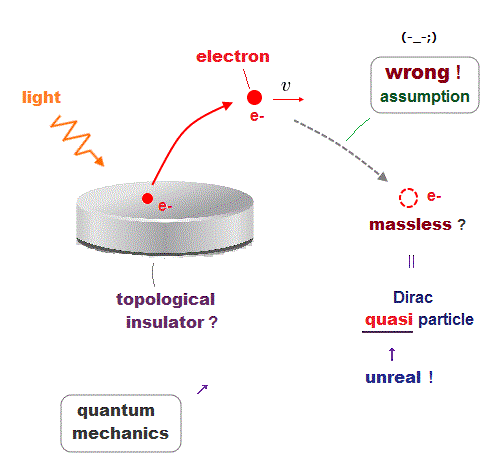
Researchers across the world have already investigated and known all the electromagnetic properties (such as response to light) of almost all materials suitable for solar cells and LED.
So revolutionary improvement or discovery of new dreamlike material in LED or solar cells will Not happen in the current conventional trial-and-error approach just measuring macroscopic electromagnetic properties of various materials without looking into the detailed ( real ) atomic mechanism (= due to fictional quantum mechanical exciton quasiparticle model ).
To break the deadlock in the current stalled technology, we have to look into and manipulate single atoms or molecules to design and build truly energy-efficient artificial photosynthesis nano-machines by using practical multi-probe atomic force microscopes whose development was hampered by the unphysical quantum mechanical model for 40 years.
The 2nd-last and last paragraphs of this hyped news on artificial photosynthesis (6/27/2025) say
"enabling the device to operate continuously for 140 hours" ← too short lifetime to be practical.
"The scalability of the artificial leaf into larger panels akin to photovoltaic modules signifies a decisive step toward (= still unrealized ) commercial deployment"
↑ This research paper ↓
p.1-abstract says even this latest artificial photosynthesis device has only 140 hour lifetime. ← too short lifetime
p.3-Fig.1 and p.8 shows this so-called artificial leaf was created by conventional macroscopic chemical procedure (= which cannot make true artificial molecular machines ), Not by manipulating single molecules.
p.7-Discussion-lower says "However, some challenges remain, such as (i) establishing an efficient conductive pathway..(ii) separating difficulty in the generated hydrogen and oxygen on the same side" ← still impractical.
(Fig.P) Solar cell technology is deadend, which is hidden by hyped news.

The present deadend solar energy research continues making fruitless attempts to utilize organic solar cells (= impractical forever, this-1st~5th-paragraphs ) or pervoskite material for a long time.
Long-time researches have already showed this new allegedly-promising material Perovskite is useless, easily-broken, and unsuitable for solar cells and LED. But researchers have continued to waste their time in these hopeless pervoskite researchers in vain ( this-6th-paragraph, this-middle-What is holding perovskite PV back ? ).
This-1st~2nd-paragraphs (2025) say -- Useless perovskite
"Due to their high efficiency, perovskite solar panels have captured the attention of both the scientific community and the renewable energy industry. However, this material still has a number of fundamental problems, and it's not clear when it will enter the mainstream residential solar market. "
This-lower challenges to overcome (2025)
says -- Unstable perovskite
"The main issue with PSCs (= perovskite solar cells ) is their stability.... However, to compete with silicon, more research is needed to improve the stability of these devices." ← still useless despite long years of fruitless researches.
This overhyped news-middle-improving durability and performance (2025) also says
"A major limitation of perovskite solar cells is their long-term durability. Perovskite cells begin to deteriorate after just one year of use in contrast to silicon cells, which can last for 25–30 years."
"The University of Surrey.. enhanced the lifespan and stability of perovskite devices, maintaining high performance for more than two months (1,530 hours) " ← Even the latest research showed the only hope = Perovskite solar cell is easily broken in just 2 months ( this-3rd-last-paragraph ), which is deadend, useless forever.
This-4th-paragraph (2025) says -- Just 16-day short lifespan
"This (perovskite solar) cell retained 95 percent of its efficiency after more than 400 hours (= just 16-day too-short lifespan ) of continuous operation under light."
The overhyped Oxford OV first commercial perovskite tandem solar cell using also silicon (= like doubtful hybrid quantum computer ) is still impractical, and its detailed information is Not disclosed ( this-8th~9th-paragraphs, 2025 )
The 2nd-last paragraph of even this hyped news (7/14/2025) admits
"The challenge now lies in scaling up production.... further research is needed to explore the long-term stability and durability of these cells under various environmental conditions."
This research paper-p.2 (and p.6-left-lower ) tried to explain the solar cell by using fictional exciton quasiparticle model (= electron + hole ) expressed as nonphysical math symbols and one-pseudo-electron DFT with artificial-chosen potential (+ impractical AIMD ) which quantum mechanical pseudo-model is unable to predict any useful material, just hampering science.
This hyped news (2025) ↓
1st-paragraph says -- Hyping only efficiency
"Scientists.. have demonstrated a perovskite–organic tandem solar cell with a certified world-record power conversion efficiency of 26.4%"
Last paragraph says -- Unstable perovskite solar cell
"In the next phase of their research, the NUS team will focus on enhancing real-world operational stability" ← still stable perovskite organic solar cells are impossible despite longtime deadend researches.
↑ This research paper's p.38-Fig.34 says -- Too short lifespan
this perovskite-organic solar cell's performance (= photon conversion efficiency = PCE ) at maximum power point (= MPP = best condition ) drastically decreased and worsened just after 200 hours, which unstable perovskite solar cells are completely useless.
The 1st paragraphs of this hyped news (3/8/2025) say
"the first solar panel that makes use of titanium – a technology that could potentially (= still unrealized ) be 1000 times more powerful than traditional cells (= impossible )."
↑ This site ↓
7th-paragraph says -- Bad durability
"it also results in titanium containing up to one percent yttrium, which could affect its durability and corrosion resistance" ← bad durability of titanium solar cell
10th-paragraph says -- Too low efficiency
"Their latest prototype has already achieved an efficiency rate of 4.49 percent, " ← The titanium solar cell is impractical, its efficiency is far lower than the conventional commercial silicon solar cell's efficiency of 25%.
The 4th, 8th paragraphs of this hyped news (10/21/2024) say
"Although more work is needed, these cells have the theoretical potential (= still unrealized ) could reach efficiencies of around 60%."
"there is still a long way to go before this technology may reach commercial maturity" ← still useless
(Fig.L) Blue phosphorescent organic LED is useless forever with too short lifespan.

This-lower-current applications and future prospects-5th-paragraph (4/14/2025) says
"However, the development of stable and efficient blue PHOLEDs remains a challenge that researchers are actively working to overcome"
Unlike practical red and green PHOLED whose lifetime is long (= 20000 ~ 70000hr in LT 95% ), only blue PHOLED is impractical with much shorter lifetime even in the latest research (= less than 1800hr in LT90 = the time to reach 90% of the initial luminance ).
↑ The 3rd and 3rd-last paragraphs of this overhyped news (5/23/2025) on blue PhOLED and fictional exciton quasiparticle says
"I can't say the problem is completely solved—of course it's not solved until it enters your display"
"This cuts the light-emitting burden of each layer in half, reducing the odds that two excitons (= fictional quasiparticle ) merge."
The last paragraph of another overhyped news (5/1/2025) also says
"With the technology still at an early stage of development, it will likely be some time before it appears in larger-screen devices such as OLED TVs – expect the rollout to take a couple more generations at least. There's also the question of the additional manufacturing costs it could introduce." ← still impractical blue PHOLED.
↑ No practical use of fictional exiton quasiparticles for LED nor solar cells, which inconvenient fact is hidden by an incredible amount of the overhyped misleading news.
The 5th and 10th paragraphs of this hyped news (7/15/2025) say
"Tests found that by depositing zinc phthalocyanine and tetracene (= using unreal exciton quasiparticle ? ) on the device, there were significant enhancements in power conversion efficiency that effectively turbocharged the silicon solar cells. "
"It still has a long way to go. Most importantly, we need to increase efficiency and prove that the technology can be stable in sunlight" ← still impractical solar cells.
↑ This other paper ↓
p.2-abstract says "Tetracene is photochemically unstable and therefore unsuitable for commercial applications"
p.8-last-paragraph says "This suggests that a large family of materials may (= just speculation ) exhibit the required properties to bring about efficient SF solar cells in the near future (= still useless )"
(Fig.H) Quantum mechanics tries to explain electromagnetic phenomena as unreal quasiparticle model.
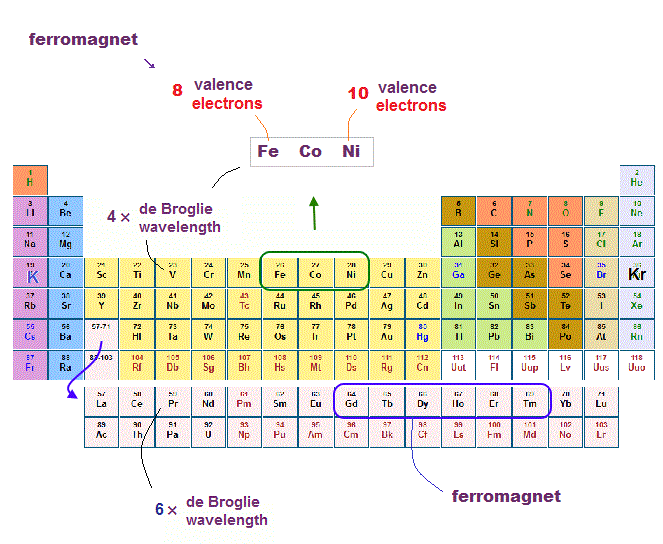
This hyped news (2025) ↓
1st-paragraph says -- Overhyped fake news
"Researchers at the University of California, Irvine have discovered a new state of quantum matter. The state exists within a material that the team reports could (= just speculation ) lead to a new era of self-charging computers and ones capable of withstanding the challenges of deep space travel." ← fake hyped news
4th-paragraph say -- Unreal exciton quasiparticle
"This new phase is like a liquid composed of electrons and their counterparts, known as "holes,",, forming exotic states known as excitons (= unreal quasiparticle )"
8th-paragraph says -- Fake news
"as his team applied the magnetic field, the material's ability to carry electricity suddenly drops,... offering a new path toward energy-efficient technologies like spin-based electronics or quantum devices" ← fake news.
12th-paragraph says -- Still useless
"We don't know yet what possibilities will open as a result" ← still useless research.
↑ This research paper ( this ↓ )
p.1-abstract just says -- Useless exciton
"excitonic (= unreal quasiparticle ) insulator in..topological material HfTe5."
"the zero Hall conductivity over a wide magnetic field range (10–72 T)."
"(unreal) pseudospin" ← No mention of practical use, contrary to the above fake news
p.5 just shows -- Unreal exciton quasiparticle
electrons and fictional exciton quasiparticles as unphysical math operators lacking real shapes. ← No quantum mechanical calculation nor prediction in this research
p.13-14 shows -- Just measure conductance
this research just measured ( Hall ) electric conductance (= σxy ) and resistance (= ρxy ) under various magnetic field and extremely cold temperature (< 20K ).
↑ Just measuring electric conductance and resistance of some material under impractically-cold temperature, which was expressed as unreal exciton quasiparticle model, is useless, energy-inefficient, irrelevant to practical computers, contrary to hypes.

Feel free to link to this site.